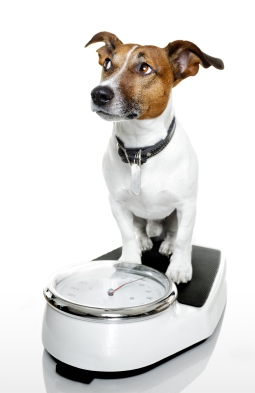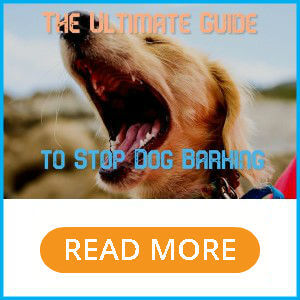 One of the worst risks to a dog’s health is being overweight. An overweight dog is neither happy nor healthy. Being overweight puts your dog at risk of developing several illnesses and diseases (like diabetes, heart disease, and arthritis), and also increases their chance of injury from excess pressure on bones and joints. The truth of the matter: your dog’s excess weight will likely shorten their lifespan. Though a very small number of dogs suffer from thyroid issues that make it difficult for them to lose weight, the most common cause of canine obesity is overfeeding. Given the risks involved in being overweight, allowing your dog the brief pleasure of enjoying one extra cup of food or handfuls of treats is just not worth it.
One of the worst risks to a dog’s health is being overweight. An overweight dog is neither happy nor healthy. Being overweight puts your dog at risk of developing several illnesses and diseases (like diabetes, heart disease, and arthritis), and also increases their chance of injury from excess pressure on bones and joints. The truth of the matter: your dog’s excess weight will likely shorten their lifespan. Though a very small number of dogs suffer from thyroid issues that make it difficult for them to lose weight, the most common cause of canine obesity is overfeeding. Given the risks involved in being overweight, allowing your dog the brief pleasure of enjoying one extra cup of food or handfuls of treats is just not worth it.
Find Out Whether Your Dog Is Overweight
First thing’s first…you’ll need to figure out if your dog is overweight or not, but this is the easy part! Simply rub your hand down their side. If you cannot easily feel your dog’s ribs, your dog is overweight. Additionally, if you view your dog from above, you should be able to notice an obvious waistline. Dogs should not have stomachs that hang down or bulge.
Set Your Dog’s Ideal Weight
Next, ascertain your dog’s current weight along with their ideal weight. You can have your dog weighed at the vet, or you can do it yourself. To weigh your dog at home: stand on a normal bathroom scale and weigh yourself, then pick up your dog and stand on the scale together. Subtract your weight from the total, and you will have your dog’s current weight. For some dogs, this won’t be possible. They may be too heavy to pick up, or they may suffer from arthritis or injury. Do not try to lift your dog if it would be uncomfortable for you or for them. Other options include investing in a canine scale or simply scheduling regular weigh-ins with your vet. Consult your veterinarian to figure out your dog’s ideal weight, or check out The Association for Pet Obesity Prevention’s ideal pet weight range web page, which charts healthy weights by dog type and breed.
Now for shedding the weight!
- If you know how much your dog is currently being fed, reduce that amount by roughly 25%. You may need to reduce the amount even more at a later date.
- Measure all food that you feed your dog. Do not “guesstimate”.
- Do NOT feed your dog table scraps, unless he or she likes dog-safe fruits and vegetables.
- Choose food and treats that are lower in calories than your dog’s typical fare.
- Consider making your own dog food or look into raw food delivery options, which usually offer pre-measured dog food in handy vacuum packs.
- If your dog is used to getting treats at a certain time of day, consider keeping the routine, but change the treat to something lower in calories and/or give your dog a smaller amount.
- Create a chart where you can record your dog’s daily food intake and exercise levels.
- Make sure everyone in the family is on board with your dog’s new eating plan.
- Plan an exercise program and stick with it. You could also consider signing your dog up with a local dog-walking service, or even some dog dancing lessons. A dog walking service will guarantee regular exercise.
- Monitor your dog’s weight about once a week, using the above-recommended methods for weigh-ins.
- As with any mammal trying to lose weight (humans included!), it’s never about following a temporary diet and then reintroducing old behaviours again. If you have your dog stick to their new diet temporarily but then grow lax with the new feeding arrangements, all the weight will come back, and then some! Losing weight and keeping it off is all about a lasting lifestyle change. Eating habits need to change for good!
- If your dog fails to lose weight even after cutting their calories for over a month, take them to the vet immediately. They may be suffering from a medical issue that needs prompt care.
Best of luck to you and your pooch!




